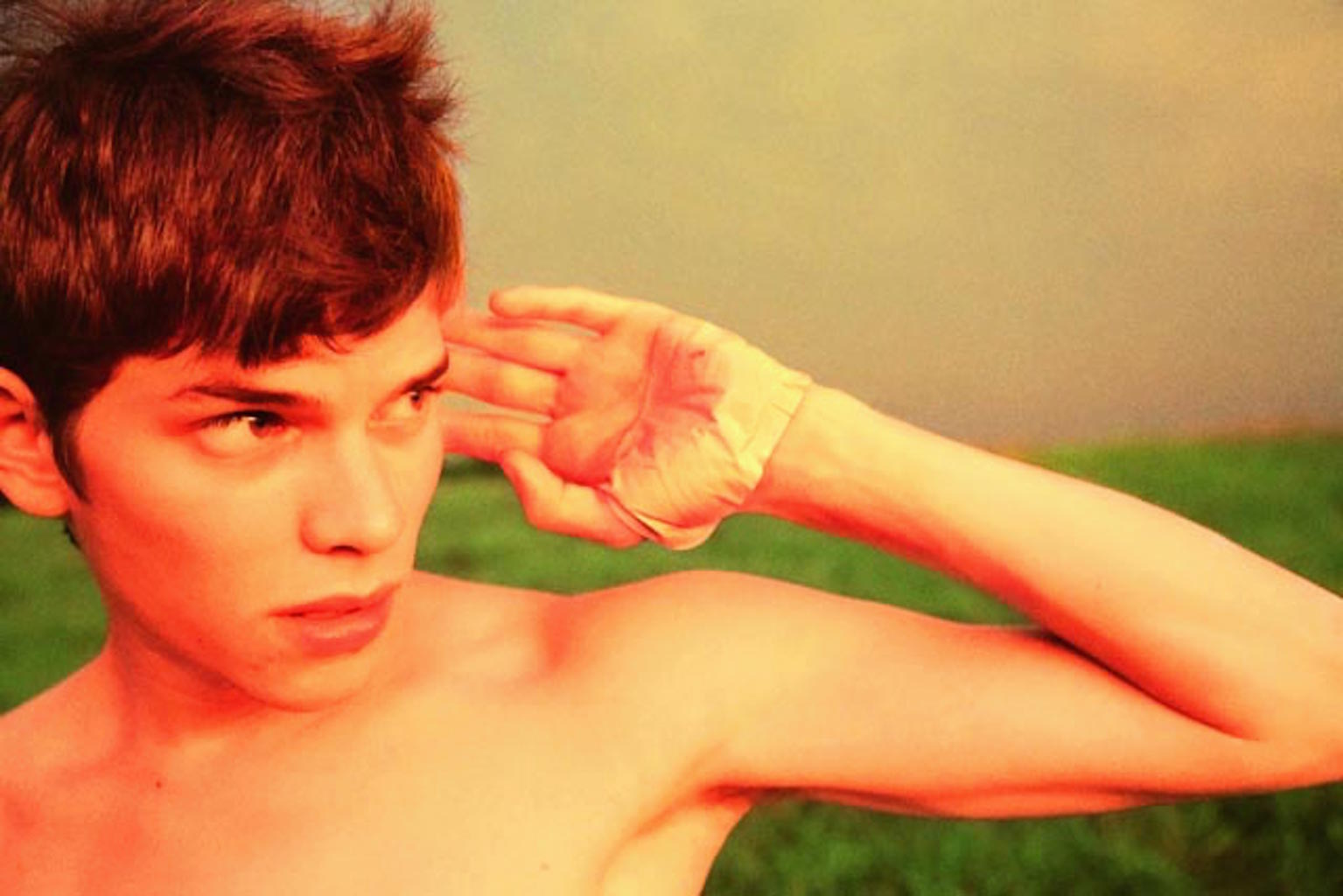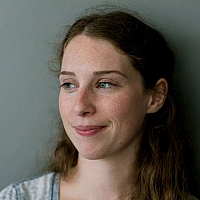
© Ryan McGinley, Ivan, 2013, C-print, 160 x 236cm. Courtesy: Ryan McGinley/ Galerie Perrotin, Paris
Over the last 15 years, Ryan McGinley’s photographs have come to symbolise what is now known as the ‘hipster’ or ‘indie’ generation. Ryan McGinley came to adulthood in the late ’90s, in the then still unruly skateboard and graffiti culture of the Lower East Side area of New York’s Downtown Manhattan. He had his first encounter with a camera as a graphic design student in 1997 and immediately began obsessively photographing everything in sight. He was a ‘photoblogger’ avant la lettre, producing paper ‘zines’ for distribution among his friends. At first, his pictures showed his own immediate world: friends with whom he partied the night away, the art scene in which he moved, the urban subculture of which he was part, and the music world in which he hung out. He focused on what he saw around him, presenting the sex, the drugs, the high jinks, the petty crime and the night life just as it was. His pictures were shot in living rooms, bathrooms and railway tunnels, on roofs, in cafes and out on the streets.

© Ryan McGinley, Jake (Cannes), 2005, 122 x 183 cm. Collection Collectie agnès b. Courtesy/ Ryan McGinley/ Team Gallery, New York
.jpg)
© Ryan McGinley, Shane (Red & Blue), 2013. Courtesy: Ryan McGinley/ Galerie Perrotin, Paris
Nudity was always a regular feature, but in the early 00s it became Ryan McGinley’s main subject. The shift was triggered by a trip he took to the state of Vermont in 2003. He spent the summer with a group of friends, staying at a holiday home lent to him by a collector friend and took photographs of his companions in its rural surroundings. The nudity of the models, the ‘idyllic’ landscape and the carefree and ebullient atmosphere of the resulting snapshot-like photographs were to become the components of McGinley’s signature style.
The relaxed playfulness of the images suggests complete spontaneity. And to some extent the poses were indeed spontaneous. But they always sprang from an idea and a manipulated situation. McGinley compares it to skateboarding, where endless practice is required to make a trick look smooth and completely mastered. At that time, Ryan McGinley was taking hundreds of photographs to find out what worked and how to capture a situation in the most striking image. After that, it was chance, the unexpected, and on-the-spot improvisation that produced ‘the crucial moment’: something that resembles Henri Cartier-Bresson’s ‘decisive moment’, but is the product of a situation generated by endless repetition over time. The images are therefore both staged and spontaneous.
.jpg)
© Ryan McGinley, Ann (slingshot), 2007. Private collection.
Courtesy: Ryan McGinley/ Team Gallery, New York
The world of Ryan McGinley is a pseudo-reality: a modern-day paradise that is happy, liberated, carefree, naughty, free-spirited and bohemian. Despite the occasional sharp edge – the odd bruise or black eye – it is never dreary or depressing. More like Johan van der Keuken’s ‘Wij zijn 17’ (‘We are 17’) or Ed van der Elsken’s ‘Love on the Left Bank’ than Nan Goldin’s grim picture of the Lower East Side underground in the 1980s or Larry Clark’s merciless exploration of a self-destructive group of youngsters in Tulsa (Oklahoma) in the 1970s.
.jpg)
© Ryan McGinley, Chloe & Amanda, 2010. Private collection.
Courtesy: Ryan McGinley/ Team Gallery, New York


